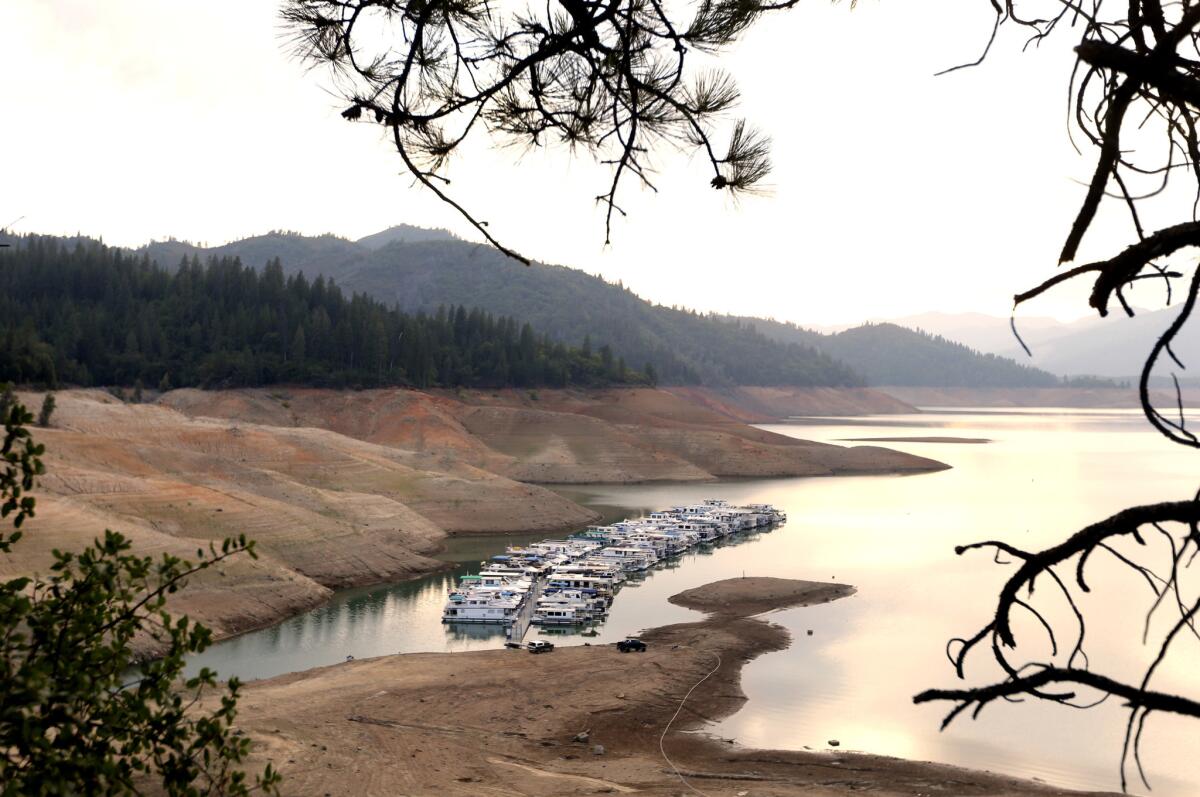Endorsement: Prop. 1 bonds a first step in addressing state’s water needs

Even in wet years, there will never be enough Sierra snowpack to give every interest group and every region in California enough inexpensive water to quench every thirst and satisfy every ambition. The state has a long way to go before it properly takes account of its water limits and updates the way it divvies up this crucial natural resource. Proposition 1, the $7.5-billion water bond on the Nov. 4 ballot, is really just a drop in the bucket. But it’s a start.
It probably took the crippling drought, now in its third year, to even get this measure on the ballot, given the state’s decades-long standoff over water. Starting with an $11.1-billion bond that was removed from the ballot in 2010 and again in 2012 for being both untimely and too bloated, lawmakers dickered for months over the measure as special interests around the Sacramento-San Joaquin River Delta fended off even the hint of anything that might help the controversial proposal to build twin tunnels to divert water southward, and as agricultural interests lobbied for funding to complete several long-sought dams.
The final bond measure that emerged from negotiations includes funding for a range of needed water projects, including groundwater cleanup. That’s likely to help Los Angeles finally make use of aquifers underneath the San Fernando Valley and rely less on imported water. Similar projects are proposed for areas around California, including towns in the Central Valley whose local water supplies are currently so contaminated as to be unusable.
The largest single spending item is $2.7 billion for water storage. That is in essence a kind of twin to the “rainy-day fund” at the center of another measure on the ballot, Proposition 2; just as money is saved from years of plenty to tide the state over in economically lean years, storage can preserve water from rainy years for periods of drought like the current one. The storage item could perhaps be described as a “not-enough-rainy-days fund.”
Proposed storage projects include recharging depleted groundwater basins. To many, though, storage is a euphemism for dams, even though there’s no specific language in the measure about dams. The mere prospect of new dams, though, was enough to turn some environmentalists against the measure — because of their damage to rivers and fish migrations, among other concerns — just as it was crucial to keeping some agricultural interests on board.
In fact, Proposition 1 doesn’t make dam construction any more likely but simply moves the dams-or-no-dams discussion to another time and another forum — a state water commission that must evaluate spending proposals based on the likelihood that the projects will be built and will produce enough usable water to make the expenditure worth it. It is a clever compromise, and makes the bond a package deserving of voter support.
Follow the Opinion section on Twitter @latimesopinion
More to Read
A cure for the common opinion
Get thought-provoking perspectives with our weekly newsletter.
You may occasionally receive promotional content from the Los Angeles Times.










